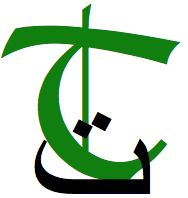President Asif Ali Zardari says the election will take place on May 11. Follow us on Tanqeed, as we kick off our blog–and much more–to count down to the 2013 election (or if you’re feeling creative, send us a pitch on the elections, on editors@tanqeed.org).
“In 1970, the PPP represented radicalism in Pakistani politics.”
—Burki and Baxter, 1975
The PPP is confident that it is going to sweep this election. Its rivals are equally confident that it is going to be “wiped out” in Punjab, a province that represents 147 NA seats crucial to being the largest party in the next National Assembly. Projection and posturing aside, this election will be a test for the PPP’s latest incarnation as a party for the people, from the people, by the electables.
In recent years the PPP has acquired a reputation for being a party of the very poor. But in 1970, it was appealing to different demographic: farmers in rapidly modernizing tehsils in Punjab who had benefited from Ayub Khan’s agricultural policies. It was doing particularly well in areas where entrepreneurial tube well farming had sprung up, more so than very poor districts that may have received electricity but lacked sufficient capital to invest in smaller farms. It did worst where poverty and biraderi ties went hand in hand – Dera Ghazi Khan and Jhang.
PPP’s victory map in Punjab has therefore changed dramatically over the last 40 years – from securing a large chunk of Central and Upper Punjab in 1970 and 1988 its support has gradually ebbed from this region and consolidated in the southern third of the province. Its leadership has changed – drastically, in some cases – but its message remains the same: change, empowerment, anti-establishment. Can the PPP still claim to being a radical, anti-establishment party? And how much will leadership matter?
The PPP voter is usually stereotyped as being an illiterate, poor jiyala with infinite faith in the Bhutto brand. One that would vote as her powerful wadera master told her to. But this is only partially true. In 1970, Bhutto found popularity amongst farmers wanting access to electricity for their tubewells, and agricultural resources they suspected were being hoarded by large, politically powerful landowners. The ensuing election would go down in history as “revolution by ballot,” with party activists with virtually no claims to land or wealth bringing constituency after constituency to the PPP’s tally.
How did the PPP go from being the strongest party in Lahore, Jhelum and Gujrat to being virtually shut out of the northern part of the province? History tells us that between 1977 and 1985 the PPP was pushed out of Upper and Central Punjab at the hands of the military and its civilian progeny. But repression tells only part of the story: this region is the site of Pakistan’s greatest prosperity story, of arid tehsils becoming remittance-fueled consumer markets, of landowners becoming businessmen and businessmen turning into industrial tycoons. Meanwhile the South remained agricultural, poor, and blamed it on the government in Lahore. Its landed elite saw opportunities for patronage in the PPP and hitched their wagon to the progressive party that was already struggling to stay true to its radical ideologies post-1970. Read on >>
Pages: 1 2



[…] campaigns, to buy electables, and outright fraud. It lost in spite of several theories (including my own) on how the party, and how Zardari, could hold on to a sizable part of the lower house in […]